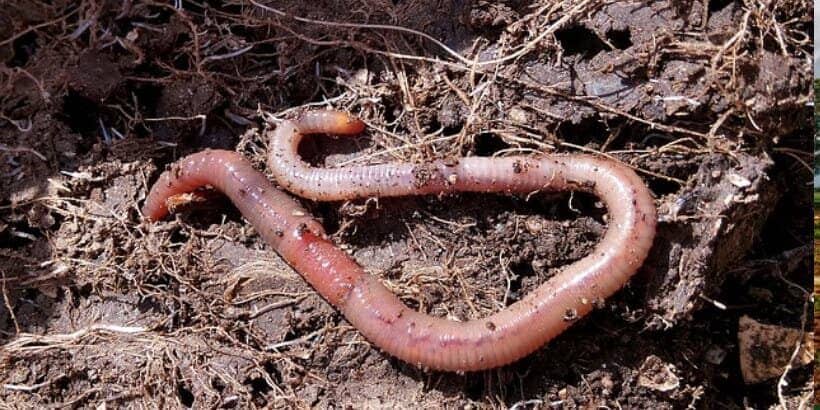Vermicomposting: Why Venture Into It?

If you’re at all in tune to the agricultural news of late, you’re well aware that soil health is in decline all over the world – an issue that is having a disastrous impact on our food systems. The answer to this international problem? Worms. Lots of them. But how, you ask? Well, vermicomposting, of course.
The following excerpt is from The Worm Farmer’s Handbook by Rhonda Sherman. It has been adapted for the web.
People from all walks of life are raising earthworms. Some begin vermicomposting as a hobby and scale up, whereas others have the intention right from the start to create a profit-making business.
They may be farmers, community garden volunteers, entrepreneurs, landscapers, greenhouse growers, or staff at establishments that generate food waste. Some are retirees, and others work full-time.
As you read the worm farm profiles throughout the book, you’ll see that some large commercial vermicomposting operations were established by airline pilots, physicians, and dentists.
One of the most common reasons for venturing into commercial vermicomposting is the desire to recycle organic waste into products that enhance soil and plant health. Soil health has recently become an important international concern.
The United Nations Food and Agriculture Organization declared 2015 the International Year of Soils to increase awareness of soil’s role in food security and healthy ecosystem function.
One objective of the campaign was to “educate the public about the crucial role soil plays in food security, climate change adaptation and mitigation, essential ecosystem services, poverty alleviation and sustainable development.”
At the end of 2015, the Paris climate agreement included a commitment from countries to increase soil carbon by 0.4 percent per year to help diminish global warming.
For decades soil was simply regarded as something that plants sprout from, and farmers used fertilizers augmented with herbicides and pesticides without regard for their environmental impact.
Topsoil has now degraded so that much of it is unable to retain nutrients and water, and it is releasing carbon into the atmosphere (which then becomes carbon dioxide, a contributor to climate change). Chemicals in fertilizers are contaminating drinking water, and dust blown from degraded soil is causing respiratory ailments in people living in rural areas.
Vermicomposting is one action people can take to help do something about these alarming soil issues. The end product of vermicomposting improves soil health and fertility, increases the nutrient content and microbial life of soils, improves water retention, and reduces the need for fertilizers and pesticides.
Organic waste is material that originated from living organisms. Households, businesses, farms, industries, municipalities, and institutions all generate some form of organic waste, including food scraps, garden and lawn clippings, livestock manures, paper products, brewery waste, pulp waste from food processors or paper mills, sewage sludge, textile mill fibers, or wood.
Organic materials such as food, paper, paperboard, and yard trimmings are the largest component of municipal solid waste generated in the United States. In 2015 they made up almost 55 percent of the waste produced. Food was the largest category of waste landfilled that year; it was a whopping 22 percent.

Large-scale vermicomposting operations like this one in New Zealand generate tons of vermicast each year. Photograph courtesy of Max Morley.
When organic waste is disposed of in landfills, it causes harm to health and the environment. As this waste breaks down in landfills, it releases liquid called leachate, which is toxic and can pollute groundwater, soil, and waterways.
In the interior of a landfill, organic materials break down in an anaerobic environment and release methane, a greenhouse gas that is 25 times more potent than carbon dioxide.
The third largest source of human-made methane emissions in the United States is landfills.
A much better alternative to landfilling food waste and other organic materials is to vermicompost them. What was once considered waste can be transformed into valuable products that nourish soils and plants.
Worm farmers have the power to solve environmental problems and turn a profit from their endeavors, too.
Vermicomposting, Vermicast, and Compost
Vermicomposting is a process that relies on earthworms and microorganisms to break down organic matter and transform its biological, physical, and chemical characteristics into a stable product that can be used as a valuable soil amendment and source of plant nutrients.
Vermicomposting turns organic materials into vermicast, which is a nutrient- rich, microbially active soil amendment or growth media for plants. When vermicast is added to soil, it boosts the nutrients available to plants and enhances soil structure and drainage.
Vermicast helps plants grow bigger and produce higher yields, and it can reduce the impact of some pests and diseases.
For the past 25 years in dozens of documents, book chapters, and interviews, I have referred to the finished product of vermicomposting as vermicompost. This term is often used to identify the mixture of earthworm castings (feces) and uneaten bedding and feedstock (organic material) that is harvested from worm beds.
While some people use this term, others call it castings and still others call it vermicast. After considerable thought, I decided to use the term vermicast throughout this book, for two important reasons.
One is because many people use the terms compost and vermicompost interchangeably, not realizing that the end product of vermicomposting is qualitatively different from compost. I think it would benefit the vermicomposting industry to distance itself from the term compost in referring to its products.
Vermicomposting and composting are very different processes, and it is important not to use the terms interchangeably. Composting is the controlled process of converting organic materials into a valuable soil amendment under aerobic conditions using biologically generated heat.
In contrast, a vermicomposting pile or worm bin should be maintained so that it does not heat up. Too much heat can kill worms!
In a compost pile the types and quantities of species of microorganisms change when the pile reaches thermophilic temperatures of 106°F (41°C) or higher. Temperatures in a worm bin remain in the psychrophilic or mesophilic range (well below 105°F/40°C), and thus there is a greater diversity and higher numbers of microorganisms during the vermicomposting process.
The bottom line delineating the difference between compost and vermicast, though, is that the latter has passed through earthworms. Thus, vermicomposting is more similar to livestock production than to composting; it requires animal husbandry skills to properly care for the worms.
A second reason to use the term vermicast is to avoid product labeling that can be confusing to consumers. Some growers label their product castings and others, vermicompost. This inconsistency in labeling has also caused a bit of a rift among worm farmers.
I like the way vermicast combines vermicompost and castings and leaves compost out of the term altogether.
Recommended Reads
Recent Articles
Beavers are ecological and hydrological Swiss Army knives. Capable of tackling just about any landscape-scale problem you might confront.
Read MoreAside from the sheer pleasure of telling your friends, straight-faced, that you maintain your garden using something called a “chicken tractor,” there are a slew of other benefits to working the land with a few of your animal friends. Getting rid of pests without chemicals, for one; letting them do the work of weeding and…
Read MoreIf the idea of running a vegetable farm sounds daunting, you’re not alone. What can you do to simplify techniques and reduce expenses? Where do you even begin?
Read MoreWhen you’re walking around the grocery store looking at the vegetables, it’s probably hard to imagine that a century ago there was twice the amount of options.
Read MoreIf you love tomatoes, you probably already know just how many varieties of these summertime staples there are. But do you know what makes each one unique?
Read More








